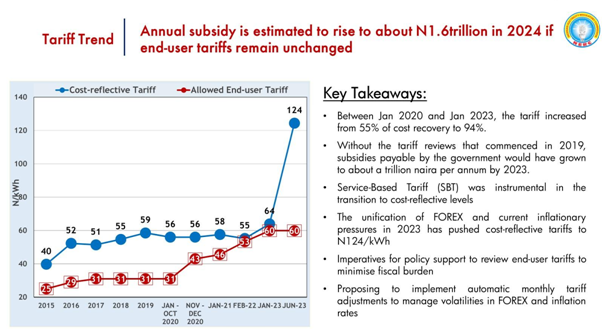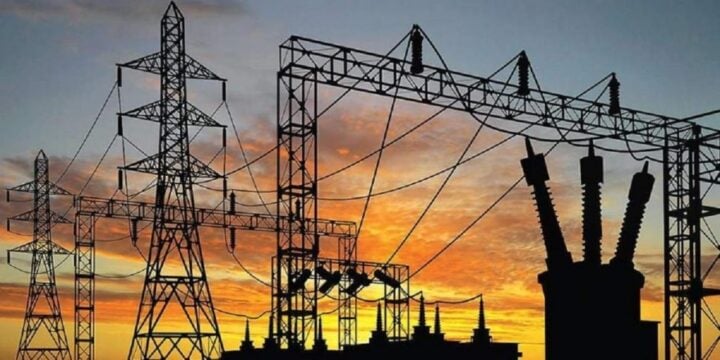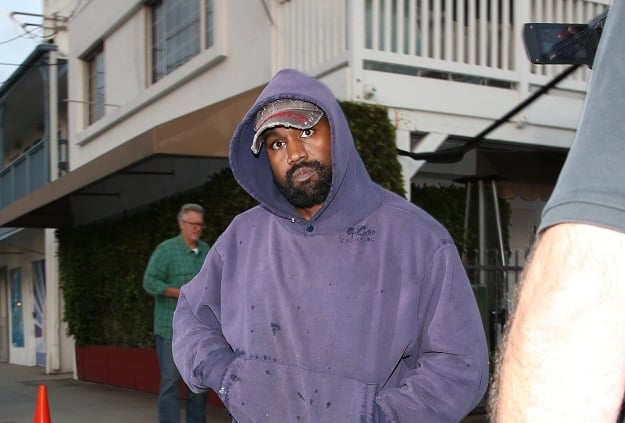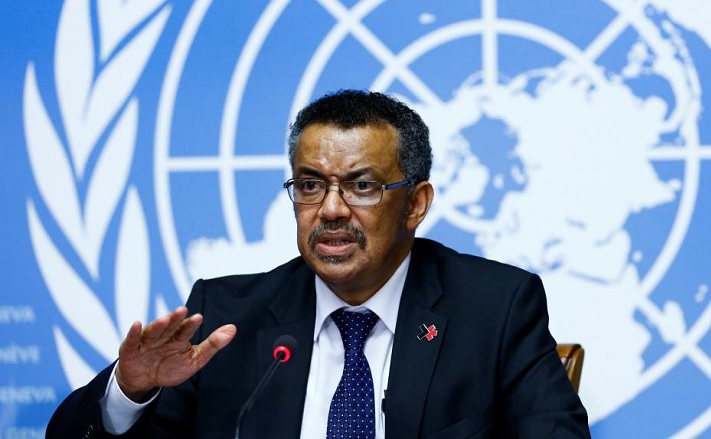BY ADETAYO ADEGBEMLE
Historically, the government has been paying electricity subsidy to the Nigeria Electricity Supply Industry (NESI). This means that there is the cost-reflective tariff of supplying 1kWh (kilowatt hour) and the allowed tariff that consumers are “allowed” to pay. This variance, otherwise called subsidy, has now turned into an elephant in the chinaware shop.
The subsidy is a result of government policy consideration of (a) welfarism: to support the social welfare of consumers who might not be able to pay the high true cost of the service, (b) economic stability: ensuring a stable and affordable energy supply is essential for economic development, and (c) political: to mitigate possible social unrest and create political instability
In 2020, the federal government, with the introduction of a service-based tariff, decided to phase out subsidy on electricity tariff because of the strain it is putting on government finances, and the inefficiencies it promotes in the energy sector.
Advertisement
You will recall that Zainab Ahmed, the minister of finance, budgets and national planning under former President Muhammadu Buhari, said that the federal government had quietly removed all subsidies in the power sector with a plan to gradually end subsidies on petrol.
This was necessitated by the fact that the payment of subsidy, both on petrol and electricity, has become an albatross on government finances. Between 2015 and 2020, the shortfall in allowed tariff reportedly stood at about N2.4 trillion, averaging N200 billion yearly. In 2022, over N600 billion has been paid in subsidies, and it has been estimated to skyrocket to at least N1 trillion in 2024.

Advertisement
The question now is: with the present state of government finances, is the payment of subsidy on electricity tariffs sustainable?
In 2022, the Nigeria Electricity Regulatory Commission (NERC) rolled out the Multi-Year Tariff Order that gradually phases out subsidy so that Nigerians can start paying cost-reflective tariffs. For instance, in the MYTO 2022, the cost reflective tariff, on average, should be N68.42 per kilowatt hour (kWh), while the allowed tariff the DisCos were to charge was N59.89/kWh. With this, the federal government provided N8.53/kWh as a subsidy. Between January and March 2023 (Q1, 2023), the total subsidy of N52.7bn was paid to the 11 DisCos.
The rationale behind the MYTO 2022, as approved by the regulators was premised on the fact that DisCos that are in highly urban centres are allowed to charge tariffs that are near cost-reflective due to evidence of high purchasing power and high consumption level in those areas, indicating that they are high-income consumers. While DisCos that are in areas with low-income consumers are allowed to charge lower allowed tariff, therefore paying a higher subsidy.
This makes the subsidy regime impact more on a low-income bracket of consumers. It means people living in places under Abuja DisCo, Ikeja DisCo and Eko DisCo were paying nearly cost-reflective tariffs, while people living in places under Benin DisCo, Yola and Ibadan DisCos are paying much less
Advertisement
An example, the NERC Q1 report shows that EkoDisCo’s cost-reflective tariff was set at N62.04/kWh and the allowed tariff (AT) was N59.49/kWh, making the variance, or subsidy paid to Eko DisCo just N2.55/kWh, totalling about N2.04 billion. Similarly, for Abuja DisCo, the cost-reflective tariff was N65,67/kWh, and the allowed tariff was N63.24/kWh, with the variance just being N2.43/kWh. Again, a total of N2.15 billion was paid in subsidy to AEDC.
The reverse was the case in places like Yola, for instance, where the cost-reflective tariff was N147.55/kWh and the allowed tariff was N65.99/kWh, thus leaving the government to bear the burden of N81.56/kWh which amounted to N7.82 billion.
In July 2023, the new administration of President Bola Tinubu placed a freeze on the tariff review, which has greatly distorted the plan, and skyrocketed the shortfall in the electricity tariff shortfall, reversing the progress made in the MYTO 2022 to phase out the subsidy in electricitytariff.
Majorly because of the changes in the macroeconomic indices (like foreign exchange, inflation, the unified exchange rate, and the cost of electricity), the cost of generation has also increased drastically. About 80% of generation is gas-based, and gas amounts to 30–40% of generation costs. So, the floating of the USD spiked cost of generation, the naira-dollar exchange rate rose from an average of N464.08/$ in Q1 to N798.40/$ in Q3, and the inflation rate rose from 22% in Q1 to 24.10% in Q3, while the US inflation rate dropped from 5.58% to 3.20%.
Advertisement
The weighted average of cost reflective tariff in Q3 of 2023 has therefore increased from N68.42 average to N111.12. This also means that the average subsidy has increased to about N51,23/kWh, totalling about N332.68 billion in Q3.
Another issue facing the electricity market is the delay and bottlenecks associated with paying the electricity subsidy, as well as the slow cycle of the electricity market. The subsidy is funded from various pools, such as the budget appropriation, federal government commitments domiciled at the federal ministry of finance, World Bank guarantees and loans, as well as CBN facilities.
Advertisement
Who are the beneficiaries of this subsidy?

Advertisement
The rate design provided that the subsidy paid by the government should have more benefit to the masses, who are mostly low-income earners across the DisCos. But now, present data shows that areas identified as high-income areas are now benefitting more from the subsidy than other areas identified as low-income consumers.
For instance, the government now has to pay N46.66/kWh in subsidy to Abuja DisCo, from the Q1 figures of N2.43/kWh, raising the subsidy figures to Abuja DisCo to N43.26 billion in Q3. This is a jump of 1,912% from N2.15 billion in Q1 to N43.26 billion in Q3, 2023. Similarly, Eko DisCo which was N2.55/kWh in Q1, has seen a rise of 1,676% in subsidy payments as of Q3, 2023.
Advertisement
Similar data for Yola Disco shows only a 98% rise in subsidy payments in Q3, 2023. For Yola DisCo, the cost-reflective tariff was N214.57/kWh, but the allowed tariff remained at N65.99/kWh with the government paying N148.58/kWh, amounting to N15.52 billion in Q3 2023.
The data clearly shows that the high-income consumers, or the rich, are benefitting more from the subsidy than the low-income consumers that the subsidy was designed for.
Data from the National Bureau of Statistics (NBS) established that rich/high-income households have a higher electricity consumption pattern than their poor neighbours.
A further report from NERC also shows that the subsidy payment for the poorest 20% of the non-maximum demand consumers, mainly residential areas, stands at a meagre 0.43 billion, while the richest $20 gulps N17.24 billion in subsidy payment by the government in Q1 2023. The middle-income group also accounts for N3.36 billion in subsidy.
By Q3, 2023, the richest 20% accounts for N117.8 billion, while the poorest 20% benefitted only N2.97 billion. These figures show clearly that the electricity tariff subsidy has been disproportionately benefiting the rich Nigerian consumers while excluding the poor ones that the subsidy was designed for. This is to the detriment of the poor, whom the federal government is looking out for as they form a higher proportion of the Nigerian populace and electricity consumers.
It is also detrimental to the government’s finances. The federal government is urged to make a quick decision before the situation spirals out of control, like the petrol subsidy.
Since 2015, about N2 trillion in subsidy has been paid, but there has been negligible investment in the NESI by the private sector (except Azura). which is a clear signal that the commercial viability of the sector has left a lot to be desired.
The electricity subsidy is not sustainable, and we need to start thinking about where else the subsidy we are paying in the electricity tariff can be better applied.
Adegbemle is the convener and executive director of PowerUpNigeria, a Power Consumer Advocacy Group.






